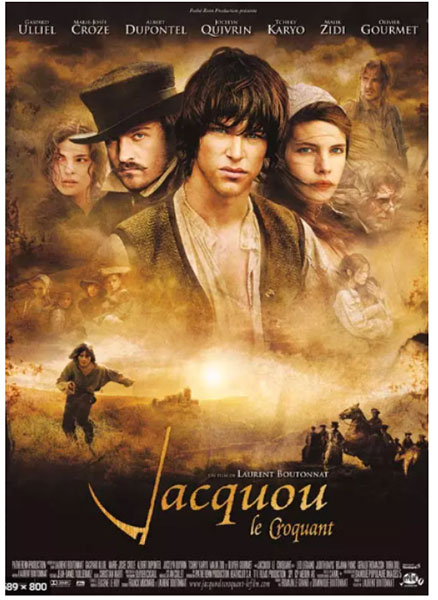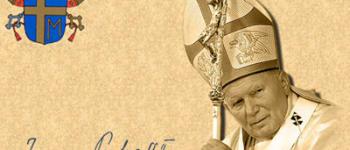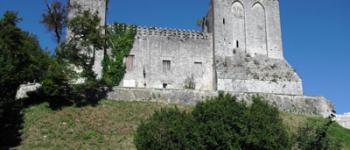
For the shooting and location scouting, Laurent Boutonnat, the director first criss-crossed the Dordogne, the Black Perigord, where the action of the book takes place, before leaving to shoot in Romania, in the Carpathians, some scenes of the film.
Laurent Boutonnat explains: "It always brings a lot to a film to be abroad, to be in countries that are not necessarily easy. It reinforces the bonds, it makes for unusual human adventures. Then we came back to shoot in the Dordogne, where the action takes place. »
The film
Jacquou Le Croquant is the film adaptation of the homonymous novel by Eugène Le Roy.
It is with this work, initially published in serial form in La Revue de Paris under the title "La Forêt Barade" in 1899, that the author became famous.
More than a simple "regionalist" or "country" novel, Jacquou Le Croquant claims and indeed has a broader dimension.
In addition to a fine and faithful description of peasant customs and habits at the beginning of the 19th century in Périgord and of the provincial society of the Restoration, and beyond a certain "folklore", it is a novel of social denunciation, a militant work that stigmatizes the return to the Ancien Régime, the discretionary power of the King and the aristocracy, the influence of the religious... and pleads for equality and republican justice.
Most of the places described in the novel actually exist, on the right bank of the Vézère Valley, in the Périgord: the Château de l'Herm, home of the de Nansac family, the villages of Rouffignac-Saint-Cernin-de-Reilhac, Fanlac and Bars.
For the needs of the film, 500 complete costumes were made for the extras and 100 for the roles, representing nearly 4,000 pieces of clothing. They required the use of about 10,000 metres of fabric and 10 months of preparation and production.
From the small to the big screen
Before being a film, Jacquou Le Croquant was a television series that first aired successfully in the autumn of 1969.
This six-episode series was produced by the ORTF and directed by a specialist in television history, Stellio Lorenzi (1921-1990), who was also an accomplice of Alain Decaux and André Castelot for the programme "La Caméra explore le temps". The role of Jacquou as a child was then played by Eric Damain.
Eric Damain is a French actor, singer and film producer born in Paris on 18 September 1956.
Jacquou le Croquant has never existed, except under the pen of the author Eugène Le Roy.
Translated with www.DeepL.com/Translator
(free version)







